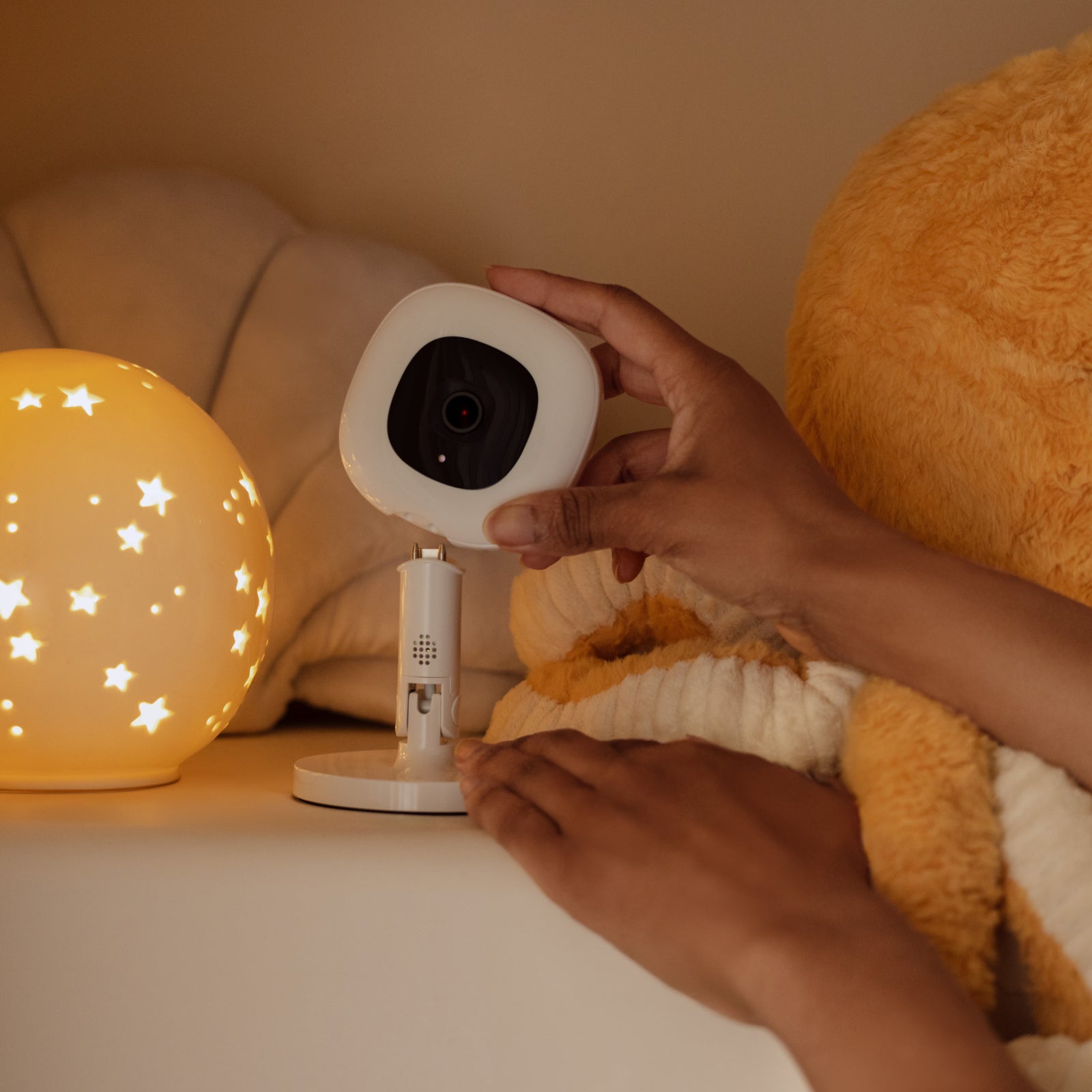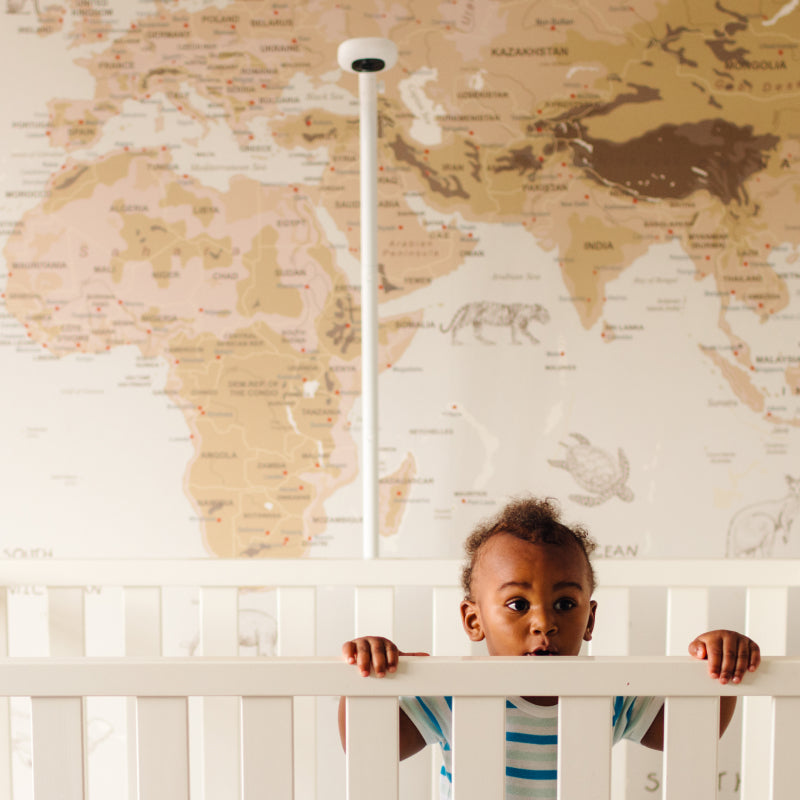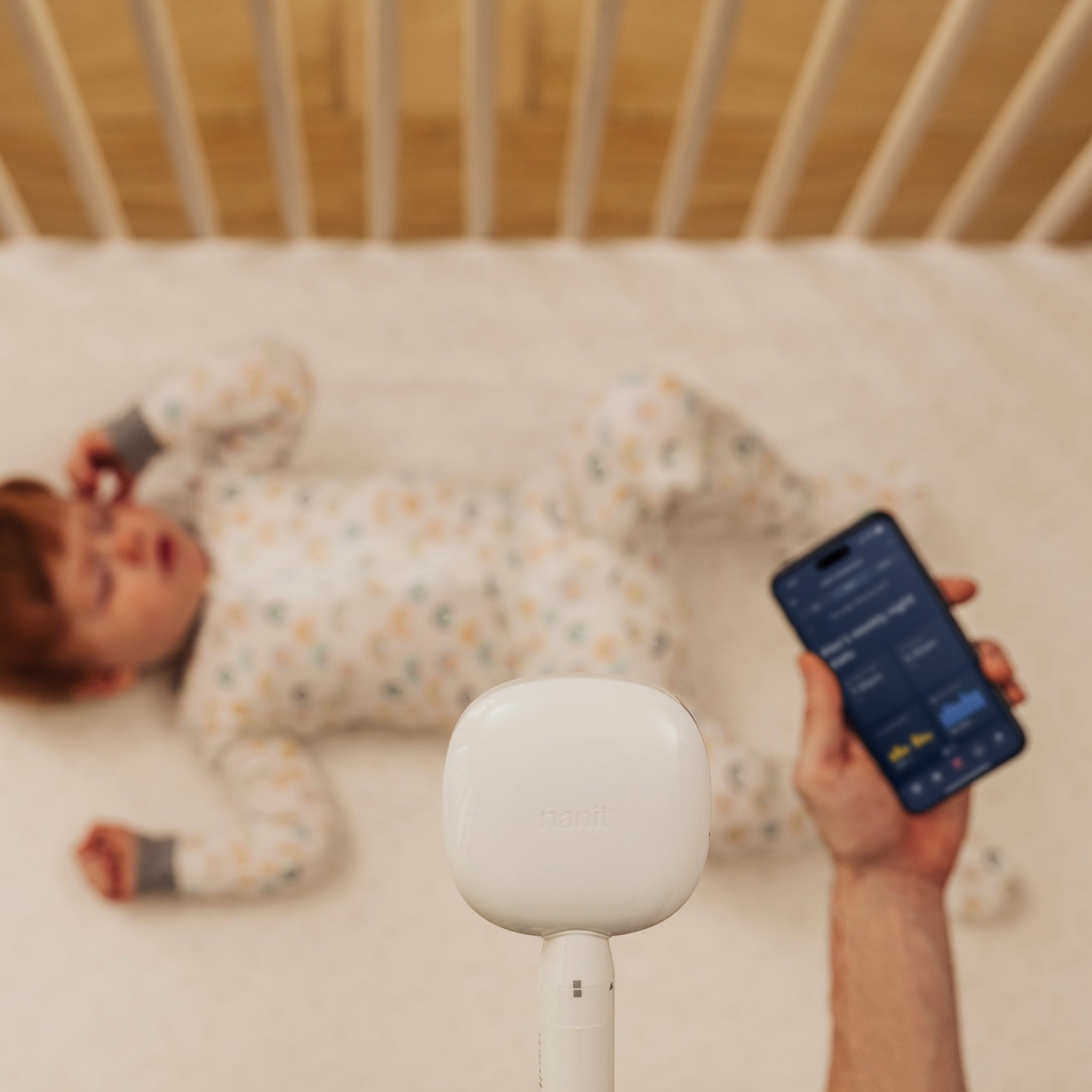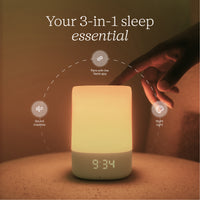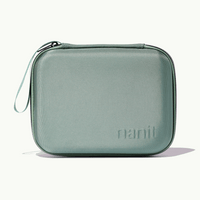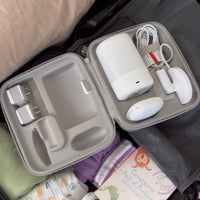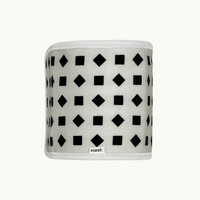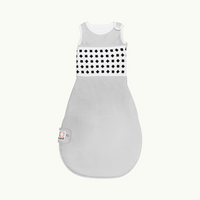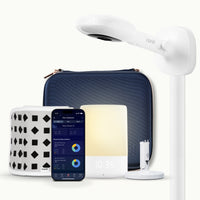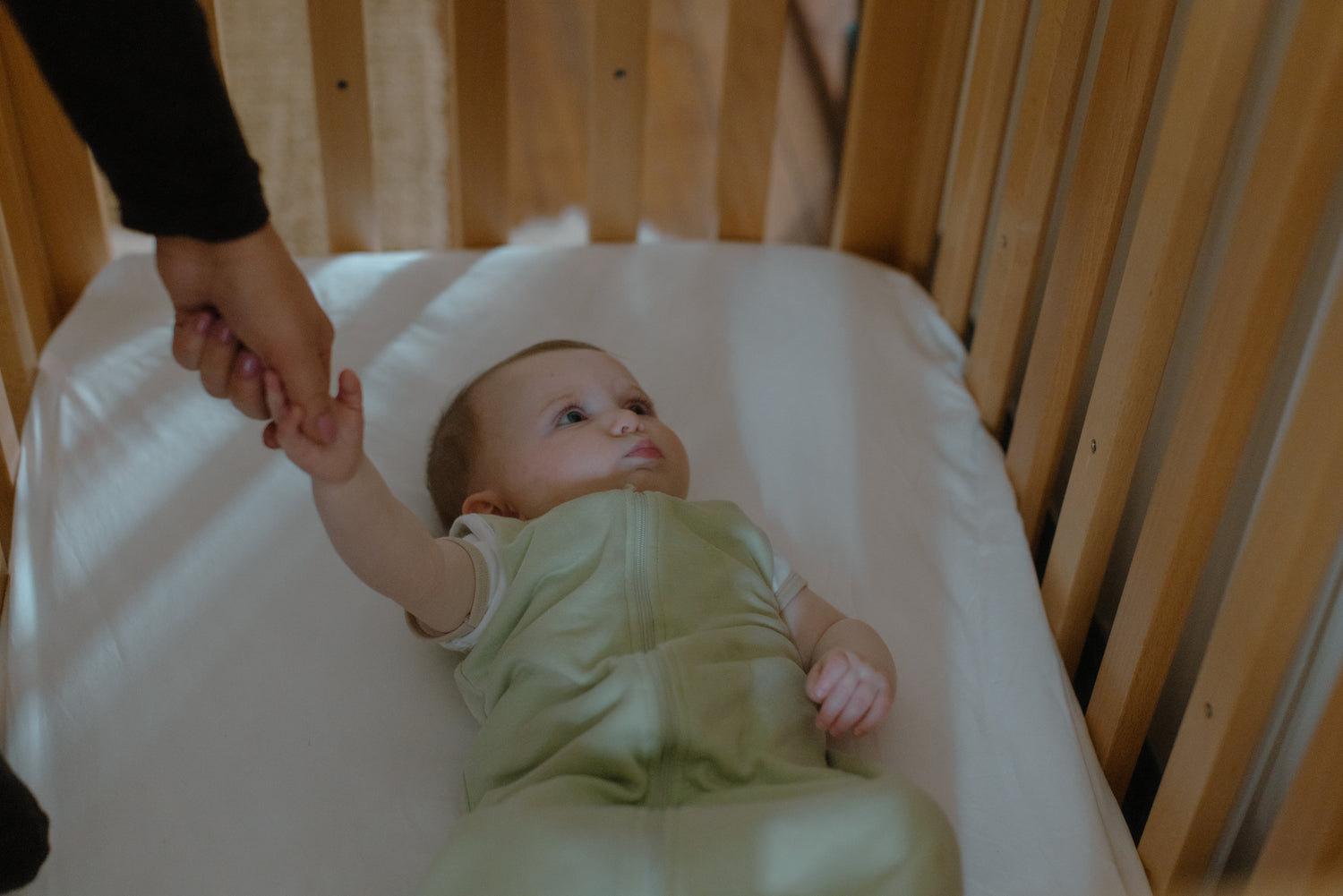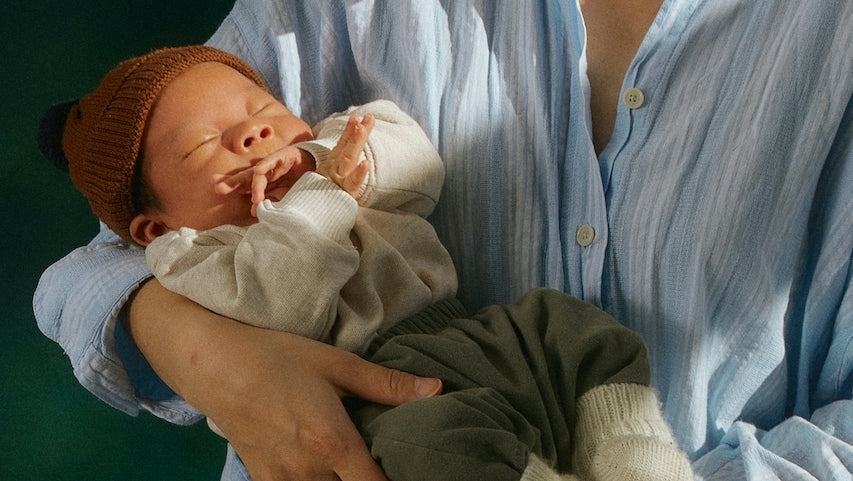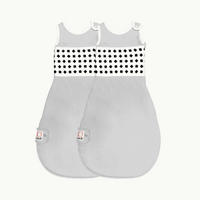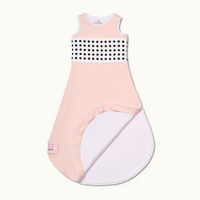Get a FREE custom sleep and feeding schedule
Our pediatric sleep experts at Nanit Lab deliver a personalized baby sleep schedule based on your baby’s age, feeding method, current rest patterns, and more. Plus, you’ll receive tips on upcoming milestones and features to help you with each new stage!
3 Month Nap Schedule
Still trying to find any sort of rhyme or reason to your baby’s sleep patterns at 3 months old? That’s actually really normal at this age, but hopefully, you will start to see some more consistent sleep patterns soon. 3 month old babies still tend to sleep anywhere between 30 minutes and 3 hours at random times of day but you will hopefully see that they are starting to sleep longer stretches at night. If you are not yet seeing a differentiation between night and day, you can help them along by keeping their sleep environment quiet and dark and keeping night feedings in the dark with minimal stimulation. On the flip side, make it clear that daytime is for fun and games. Try and have those daytime feedings in a well-lit room and you can start to encourage some playtime after a feed. Plus, be sure they’re getting exposed to some sunlight. At this age, you can still use a bassinet or a swaddle to help your baby sleep, day or night.
3 Month Feed Schedule
Night feedings can really take their toll on most parents at this point. Remember, it’s perfectly normal, although maybe not enjoyable, to wake multiple times at night to feed your baby. If you know another parent who doesn’t, they’re just super lucky. It’s okay to be jealous, but there’s no need to get down on yourself. Get your feedings in when you can, and try and make sure that your little one gets plenty of milk during the day so that they can last as long as possible without waking you at night.
3 Month Old Wake Windows
At 3 months old, your baby's wake windows are beginning to last between 1 to 2 hours. Wake time periods are a fantastic opportunity for sensory play and interaction, which are crucial for their cognitive and physical development. Observing your baby for signs of sleepiness towards the end of each wake window can help you time their naps perfectly, contributing to a more structured sleep schedule. This routine not only supports your baby's growth but also helps instill those all-important healthy sleep habits early on.
How Long Should a 3 Month Old Sleep?
This tends to be an age where you start to see a little more predictability to your days and nights. 14-17 hours of total sleep is common and considered healthy at three months. Your baby might still be fussy in the evenings but more than likely you will soon see that settles down and they are ready for an earlier bedtime. A comfortable bedtime for a 3 month old will likely be somewhere between 6 and 8 pm.
Night wake ups are still really variable at 3 months. Anywhere between 2 and 6 times a night is normal. If you’ve got a baby who’s been waking up 6 times a night for 2 months straight, you might feel at your wit’s end, but you should know that this is not something to be alarmed about. If your baby is more on the 2 times a night end of the spectrum, you could consider yourself lucky, though you might not feel it.
If you haven’t put blackout curtains in your child’s nursery, you should consider doing so now. Trash bags work as a great alternative. Seriously.
Incorporating the following in your 3-month-old's sleep schedule can help lay the foundation for sleep training and healthy sleep habits as your baby grows:
3 Month Old Sleep Schedule
|
Wake and Milk Feed 6:30 AM |
Depending on the last time your little one was fed, this first feed of the day might be a big one. Make sure to take note if your baby is not super hungry —this might be a sign that you can start to cut back on feeding in the middle of the night (yay!). For those breastfeeding, you'll probably be very full in the morning, particularly after a long stretch of rest and not feeding. Consider pumping off extra milk to store for later, after you've fed your baby. |
|
Nap time 8:30 AM - 9:30 AM |
Someone's feeling a bit sleepy! Don't be surprised if your baby needs a nap before this time, two hours awake might be too long for your little one at this time in the morning. Just keep an eye on how long they nap —too long might mean that they don't get enough to eat during the day, making them hungrier at night. |
|
Milk Feed 9:30 AM |
Time for food! Feed your baby upon awakening, who may not wake up for another half an hour or so. Your baby might be still falling asleep at the breast or the bottle at this stage and that's fine! |
|
Nap time 11:30 AM - 12:30 PM |
Let your little one recharge for another 30 minute daytime nap if they don't wake up on their own. |
|
Milk Feed 12:30 PM |
Feeding time has come (again) —this may not happen for another half an hour when the baby awakes. |
|
Nap time 2:30 PM - 3:30 PM |
Babies are like cats with their naps, sometimes only needing 15-40 minutes at this time (or a little longer if they want)... let your little one sleep for another 30 minutes if they don't wake up on their own at this time. Your baby might even fit in another cat nap before bedtime if the naps were short. |
|
Milk Feed 3:30 PM |
Wakey wakey. Time to be fed! |
|
Bathtime 5:45 PM |
It's up to you to decide if a bath feels right at this time of day. If your little one is happy and relaxed, great! But if it stresses you or your baby out, maybe try bathing at a different time of the day, or not every day. |
|
Last Milk Feed 6:15 PM |
Your little one is at the age where you can start thinking about trying to keep them from falling asleep at the bottle or breast. Maybe break up the feed and bedtime routine with a song or story to create some positive sleep associations. But if your baby is still falling asleep at the breast or bottle, don't worry about it-we can focus on that in a month or so! |
|
Bedtime 6:30 PM |
Time for bed. Sweet Dreams! |




